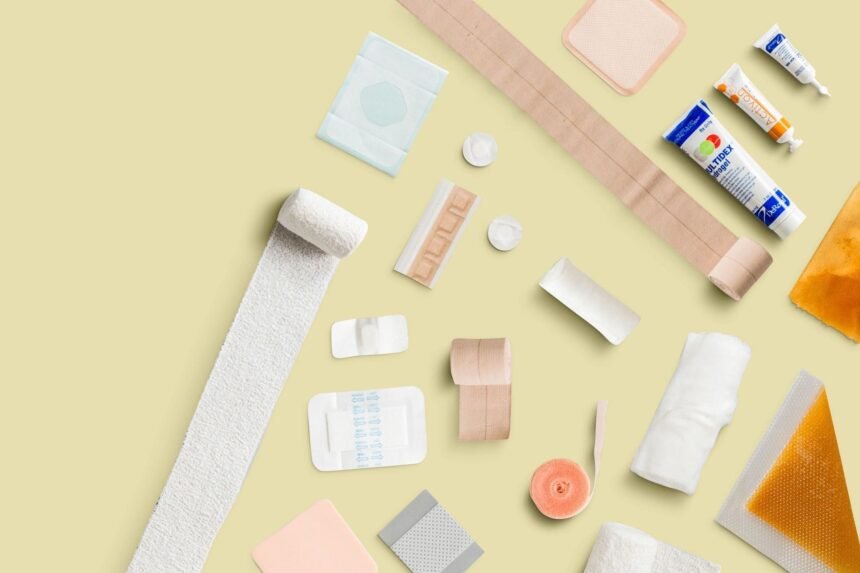Effective wound management is fundamental to a successful healing process. The choice of appropriate wound dressing products is critical in safeguarding wounds against infection and promoting cell regeneration. The advancements in medical technology have significantly expanded the range of products available to healthcare professionals and patients, offering tailored solutions to cater to various wound types.
The Vital Role of Wound Dressing Products
Wound dressings are an integral part of wound care. They serve multiple purposes—protection from microbial contamination, absorption of excess wound exudate, maintenance of a moist wound environment, and delivery of therapeutic agents. Different wound scenarios require specific types of dressings, ranging from traditional bandages to advanced options such as foam, alginate, hydrocolloid, and hydrogel dressings.
It is essential to understand the type of wound when choosing a dressing. Acute wounds, such as surgical incisions and lacerations, typically necessitate a different approach than chronic wounds, including pressure ulcers or diabetic foot ulcers. The rate of exudation, the stage of wound healing, and the presence of necrotic tissue or infection should all influence the selection of dressing.
Categories of Wound Dressing Products
The evolution of wound dressing products has led to the development of active and passive dressings. Passive dressings are designed to protect the wound and control moisture, while active dressings also provide compounds that promote wound healing, such as antimicrobials or pain-relief medications.
Foam dressings are highly absorbent and can be used on a range of exuding wounds. Alginates, derived from seaweed, are conducive for wounds with significant exudate and help in autolytic debridement. Hydrogels can donate moisture to a dry wound, promoting a moist healing environment beneficial for epithelial cell migration.
Supporting Healing with Nutrition
Nutrition plays an important role in wound healing, as the body requires additional nutrients to rebuild tissue and fight infection. Nutritional supplements, such as Osmolax Powder, may be recommended to support the body’s needs during recovery. These supplements contribute to the maintenance of adequate nutritional status, which can influence the wound healing timeline and outcome positively.
Osmolax Powder is a gentle laxative, easing constipation which can be a concern for patients with limited mobility due to wounds or surgery. Keeping the digestive system in good health allows the body to focus resources on healing processes.
Advanced Wound Care Products
As wound care technology progresses, advanced products are being designed to address specific needs. Some contain substances that stimulate tissue growth or modulate inflammation. Others might have designs that contour to challenging wound sites or release medication over an extended period.
Even though advanced wound care products offer significant benefits, their application needs to be based on good clinical judgement and a thorough understanding of wound care principles. Overuse or inappropriate selection can lead to complications, delayed healing, or increased costs.
The Intersection of Wound Care and Safety
Wound care products are essential not only for healing but also for ensuring the overall safety and mobility of patients. Injuries or chronic conditions that lead to immobility can present secondary challenges, including the risk of further injury during an emergency. In such cases, having reliable mobility aids such as an Evacuation Chair on hand is a prudent measure.
An Evacuation Chair can facilitate the safe and swift movement of patients with limited mobility, especially during emergencies. These chairs are designed to navigate stairs and tight spaces, ensuring that all individuals, regardless of their health condition, can evacuate safely when required.
Implementing a Holistic Wound Care Approach
A comprehensive approach to wound care encompasses the selection of the correct dressings, consideration of nutritional support, and planning for the safety and mobility of the patient. Healthcare providers must evaluate each aspect closely, crafting a wound care strategy that optimally supports healing and overall wellbeing.
Wound healing is a complex process influenced by various internal and external factors. While dressings are one of the most important considerations in wound management, the successful healing journey demands a multifaceted approach. Health professionals must keep abreast of the latest developments in wound care products and integrate them into a patient-centered treatment regimen.
Conclusion
Investing in quality wound care is a step towards ensuring effective healing and patient safety. From the selection of advanced wound dressing products to the integration of nutritional supplements such as Osmolax Powder, every decision must be made with the end goal of optimal wound healing in mind. Additionally, the presence of equipment such as Evacuation Chair within care settings reflects a commitment to comprehensive patient care, ensuring that even in emergencies, the standard of care remains uncompromised.
The art and science of wound care continue to advance, bringing forward new products and techniques that challenge traditional practices. It is the responsibility of healthcare providers to stay educated and adaptable, ensuring that their patients receive the best possible care tailored to their unique healing needs.








